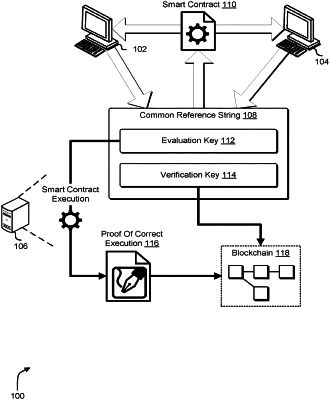| CPC H04L 9/085 (2013.01) [G06F 7/725 (2013.01); G06F 17/17 (2013.01); H04L 9/14 (2013.01); H04L 9/3066 (2013.01); H04L 9/3093 (2013.01); H04L 9/3218 (2013.01); H04L 9/0841 (2013.01); H04L 9/3236 (2013.01); H04L 9/50 (2022.05)] | 14 Claims |

|
1. A computer-implemented method of executing a smart contract generated by a first computing entity and a second computing entity, the computer-implemented method implemented by a third computing entity different from both the first computing entity and the second computing entity, the computer-implemented method comprising:
receiving, at the third computing entity, the smart contract comprising a first transaction input and an evaluation key Ek provided by the first computing entity and a second transaction input provided by the second computing entity;
executing the smart contract by performing a computational task comprising the computation of a function on an input to the smart contract to produce an output of the smart contract;
producing a proof of correct execution of the smart contract, wherein the proof is based at least in part on the evaluation key Ek;
generating a blockchain transaction using the output of the smart contract; and
validating, by a fourth computing entity different from the first, second, and third computing entities, the generated transaction using a verification key Vk and the proof.
|